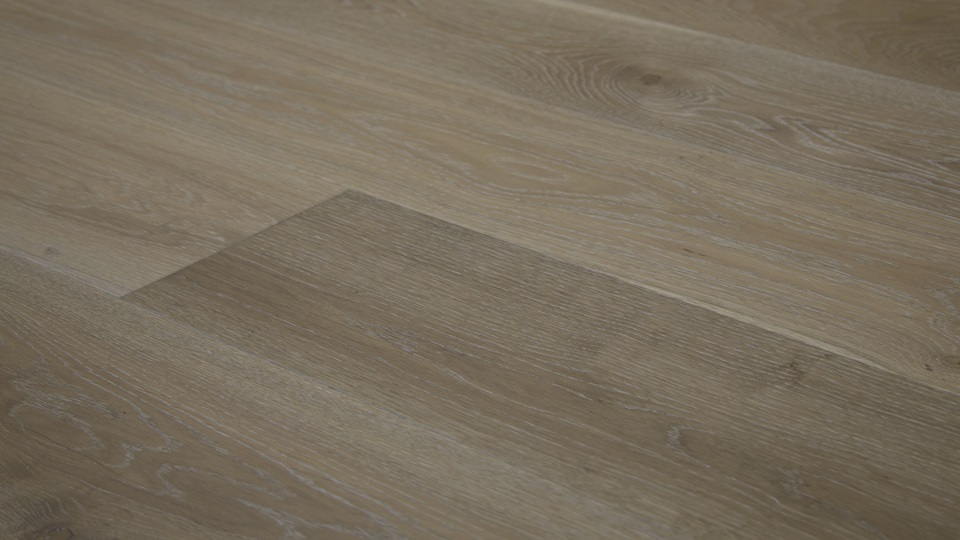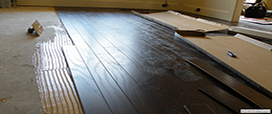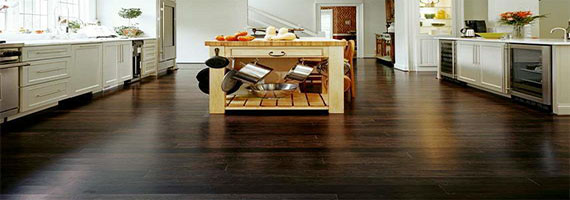
Installation - Laminate
Laminate Maintenance
Maintenance Procedures - LaminateNecessary steps for the long term performance of your FERMA laminate flooring:
Initial Maintenance upon Completion of the Installation:
- Sweep or vacuum thoroughly and remove any adhesive or dirt residue from the surface;
- Lightly damp mop. Remove any scuffs and excessive soil by careful scrubbing. Certain types of rubber heel marks may be removed rubbing with a cloth dampened in mineral spirits.
Residential Care:
- Make sure furniture legs have large surface and non-staining floor protectors. Replace small, narrow metal or dome-shaped glides with smooth, flat glides that are in flat contact with the floor. Glides should be equipped with self-adhesive felt pads to avoid scratching the surface of the floor. The pads should be checked periodically for grit and wear and replaced when necessary
- Heavy furniture or appliances that are not moved often should be equipped with flat, non-staining composition furniture casters or cups of appropriate size
- Mobile appliances and furniture should be equipped with easily swiveling casters. They should be at least 2″ in diameter with non-staining hard rubber treads at least 3/4″ wide. Do not use ball-shaped casters
- Place mats at outside entrances to prevent dirt, grit and soil from being tracked onto your floor. Use 100% latex- backed mats, because some rubber-backed mats or carpets may permanently stain your floor
- Draw drapes and blinds during peak periods of strong sunlight. The floor, likes other home furnishing products, may discolor or fade when overexposed to the sun
- Heat-producing appliances such as a refrigerator or range, or hot air registers emitting a direct flow of heat in excess of 120 °F, even intermittently, can scorch, burn, discolor or fade your floor. Cigarettes, matches and other very hot objects can also damage the floor.
- Avoid wearing stiletto or spiked heels on the floor. These types of heels can indent or damage many types of floors
- Sweep or vacuum regularly to remove dirt and grit that can abrade, dull or scratch the floor. Do not use a vacuum with a beater brush, because it may damage the floor’s surface
- Wipe up spills promptly with a damp cloth or mop
- For a more thorough cleaning, wash the floor with recommended cleaner or other suitable, non-detergent based resilient floor cleaner.
- Avoid one-step “mop and polish” products, dishwashing liquids and oil-based cleaners. These may leave a residue which can attract dirt and dull your floor’s finish. Avoid cleaners that contain abrasives or solvents which may permanently damage your floor
- Remove excess water after washing the floor
- The gloss level may change over time depending on the amount of traffic, care, and maintenance the floor receives.
Commercial Care:
- Use extreme care to protect the floor. It is only be used for light commercial application. The frequency of the maintenance is determined by the type and frequency of the traffic on the floor. Light commercial application is represented by light type and light frequency of the traffic
- Always use strips of hardwood or plywood when moving heavy objects such as appliance and furniture over the floor even when using carts or dollies with wheels
- Furniture legs should be equipped with large, flat surface protectors or glides.
- Protect the floor with heavy craft paper on construction sites where other trades are active and the initial application of floor polish is prohibited. Do not use asphalt-saturated felt paper
- Remove spills quickly to prevent staining
- Some solutions contain chemicals that may permanently stain or damage the floor if not cleaned up immediately. Asphalt driveways, particularly those recently installed or resealed with coal tar sealer, can cause permanent staining in prominent traffic areas. Regular maintenance and floor mats placed at entryways will reduce or eliminate coal tar stains
- Avoid damage from tracked-in dirt and grit by placing floor mats at outside entrance doorways
- Do not use rubber-backed mats, which may cause permanent staining
- Wet floors are slippery. Water, and other liquids and foreign matter on the surface of the floor can cause it to be slippery and should be removed immediately. Improper waxes and finishes can also cause slipperiness. Whenever washing, polishing or stripping floor, traffic should be excluded from the area due to the possibility of slipping.The use of walk-off mats at entrances will reduce tracked-in water
- Vacuum, sweep, or dust with an untreated mop, daily, to remove loose dirt and grit. Do not use sweeping compounds or oil treated mops; To remove heavy soil use a slow speed floor machine equipped with a medium-grade, natural fiber scrubbing brush and a concentrated cleaner. Rinse floor after scrubbing
- Periodically, once or twice a year or as needed, strip the floor polish to avoid build-up.
- Rinse the floor thoroughly with a clean mop, changing water frequently. Allow to dry.
Stain Removal
- To remove stubborn spots or stains from the floor, always begin with mild cleaner. If it fails to remove stain, use mineral spirits. Do not use harsh solvents such as acetone or lacquer thinner, which may permanently soften the surface. For extreme stains, such as paints, permanent markers or dyes, try fingernail polish remover containing acetone (not straight acetone) applied to a soft cloth and rubbing.
Laminate Maintenance Download
Summary

Article Name
Laminate Maintenance
DescriptionTake a look at necessary steps for the long term performance of your FERMA laminate flooring, and how to maintain your laminate flooring.
Author
FERMA Flooring
Publisher Name
FERMA Flooring
Publisher Logo






